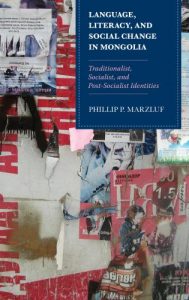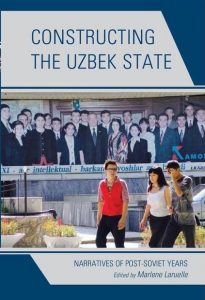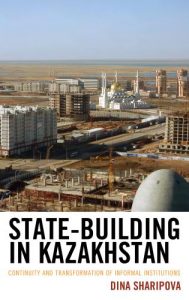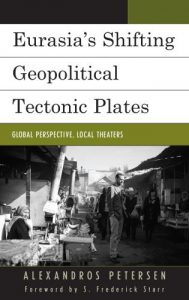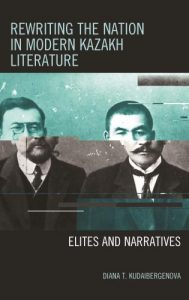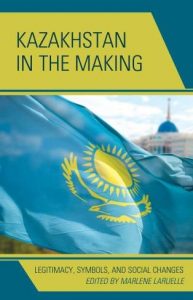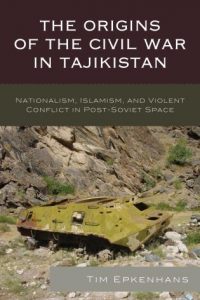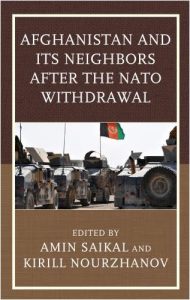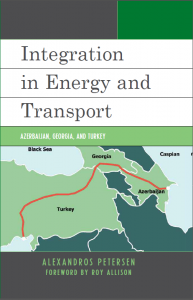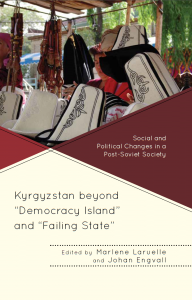Contemporary Central Asia. Societies, Politics and Cultures
Central Asia, located at the crossroads of Russia, China, and the Islamic world, remains one of the world’s least-understood regions, despite being a significant theater for muscle-flexing by the great powers and regional players. This series, published in partnership with George Washington University’s Elliott School of International Affairs, offers deep insights into Central Asia by providing readers unique access to state-of-the-art expertise on the region. Going beyond media clichés, the series brings the study of Central Asia into the framework of social sciences and hopes to overcome the dearth of works on the region for both scholarly knowledge and undergraduate and graduate student education.
Now accepting submissions!
To be considered for publication, please contact Professor Laruelle, laruelle@gwu.edu and send an outline of your manuscript.
The outline should include:
- a statement on the book’s goals and methods
- a detailed table of contents
- a one-paragraph biography of author(s)
- a sample chapter or an introduction
- a prospective deadline for submission
The Cinema of Soviet Kazakhstan 1925 – 1991: An Uneasy Legacy
Modern Central Asia: A Primary Source Reader
Visions of Development in Central Asia. Revitalizing the Culture Concept
The Nazarbayev Generation. Youth in Kazakhstan
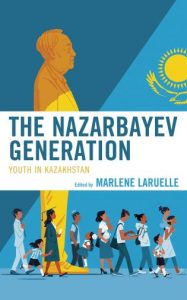 EDITED BY MARLENE LARUELLE – CONTRIBUTIONS BY AZIZ BURKHANOV; ULAN BIGOZHIN; DOUGLAS BLUM; REUEL R. HANKS; SABINA INSEBAYEVA; RICO ISAACS; AZAMAT K. JUNISBAI; BARBARA JUNISBAI; KARLYGASH KABATOVA; DANIYAR KOSNAZAROV; DIANA T. KUDAIBERGENOVA; NAZGUL MINGISHEVA; ZHANAR NAGAYEVA; PETER ROLLBERG; DINA SHARIPOVA; ALEXANDRA TSAY AND GALYM ZHUSSIPBEK
EDITED BY MARLENE LARUELLE – CONTRIBUTIONS BY AZIZ BURKHANOV; ULAN BIGOZHIN; DOUGLAS BLUM; REUEL R. HANKS; SABINA INSEBAYEVA; RICO ISAACS; AZAMAT K. JUNISBAI; BARBARA JUNISBAI; KARLYGASH KABATOVA; DANIYAR KOSNAZAROV; DIANA T. KUDAIBERGENOVA; NAZGUL MINGISHEVA; ZHANAR NAGAYEVA; PETER ROLLBERG; DINA SHARIPOVA; ALEXANDRA TSAY AND GALYM ZHUSSIPBEK
This social and cultural analysis provides a new understanding of Kazakhstan’s younger generations that emerged during the rule of Nursultan Nazarbayev, who has been presiding over Kazakhstan for the thirty years since the collapse of the Soviet Union. Half of Kazakhstan’s population was born after he took power and have no direct memory of the Soviet regime. Since the early 2000s, they have lived in a world of political stability and relative material affluence, and have developed a strong consumerist culture. Even with growing government restrictions on media, religion, and formal public expression, they have been raised in a comparatively free country. This book offers the first collective study of the “Nazarbayev Generation,” illuminating the diversity of the country’s younger generations and the transformations of social and cultural norms that have taken place over the course of three decades. The contributors to this collection move away from state-centric, top-down perspectives in favor of grassroots realities and bottom-up dynamics in order to better integrate sociological data.
The Dialectics of Post-Soviet Modernity and the Changing Contours of Islamic Discourse in Azerbaijan. Toward a Resacralization of Public Space
Azerbaijan’s independence came after seven decades of militant atheism of Soviet modernization project and emerged into staunch secularism of Western modernity, two factors that, on a par with the country’s precarious neighborhood, promised a sustained indigenous effort towards the desacralization of the country’s political space and the associated exclusion of religion from politics, a modern blueprint that the Azerbaijani state and its society have stood united to diligently follow over the cause of the country’s independent existence. Yet the specific dynamics facing the country in the third decade of independence and the changing contours of its international engagements have gradually been working to set the country free from the stifling grips of Western-style modernity and lay the groundwork for quintessentially and esoterically Azerbaijani pathway of statehood to follow, one combining the nation’s historical embeddedness in an Islamic milieu with its century-old practical experience of modern policy making.
This book offers a detailed account of the dynamics behind the religious-secular divide in Azerbaijan over the past two decades of independence and the conditions underlying the ongoing process of normalization of Islamic discourse and the rising cooperation across the country’s secular-religious political landscape and looks into some future dynamics this transformation is set to unleash. It begins with an outline of hybrid intentionality behind the elite’s manifold attitudes to Islam, with particular focus on the strategy of separation between religion and politics in which those attitudes have found expression. It then proceeds to show the complicity of civil society and the broader populace, as well as the international community and the country’s Islamic stratum itself, in the reproduction of the narrative of Islamic danger and the resultant religious-secular divide in post-Soviet Azerbaijan. The study then continues with an account of a number of dialectical tensions inherent in policy outcomes to which the hybrid nature of elite intentionality has given rise. It then follows on to discuss key factors contributing to the ongoing normalization of Islam across the public realm and the gradual bridging of the religious-secular divide amidst the ongoing state repression. The volume concludes with a comparative insight into some common features and conditioning factors behind the dynamics underlying the religious-secular nexus in Azerbaijan and across the broader region of the Middle East. It also offers an insight into some future potentialities that the current dynamics have laid bare.
Tajikistan on the Move. Statebuilding and Societal Transformations
Another specificity of Tajikistan is its massive labor migration flows toward Russia. Out of a population of eight million, about one million work abroad seasonally—one of the highest rates of departure in the world. Migration trends have impacted Tajikistan’s economy and rent mechanisms: half of the country’s GDP comes from migrant remittances, a higher share than anywhere else in the world. However, it is in the societal and cultural realms that migration has had the most transformative effect. Migrants’ cultural and societal identities are on the move, with a growing role given to Islam as a normative tool for regulating the cultural shock of migration. Islam, and especially a globalized fundamentalist pietist movement, regulates both physical and moral security in workplace and other settings, and brings migrants together to make their interactions meaningful and socio-politically relevant. It offers a new social prestige to those who work in an environment seen as threatening to their Islamic identity.
The first section of this volume investigates the critical question of the nature of the Tajik political regime, its stability, legitimacy mechanisms, and patterns of centralization. In the volume’s second part, we move away from studying the state to delve into the societal fabric of Tajikistan, shaped by local rural specificities and social vulnerabilities in the health sector and gender relationships. The third section of the volume is devoted to identity narratives and changes. While the Tajik regime works hard to control the national narrative and the interpretation of the civil war, society is literally and figuratively on the move, as migration profoundly reshapes societal structures and cultural values
Central Asia in the Era of Sovereignty. The Return of Tamerlane?
Language, Literacy, and Social Change in Mongolia. Traditionalist, Socialist, and Post-Socialist Identities
PHILLIP P. MARZLUF
Language, Literacy, and Social Change in Mongolia is the first full-length treatment of literacy in Mongolian. Challenging readers’ assumptions about Central Asia and Mongolia, this book focuses on Mongolians’ experiences with reading and writing throughout the past 100 years. Literacy, as a powerful historical and social variable, shows readers how reading and writing have shaped the lives of Mongolians and, at the same time, how reading and writing have been transformed by historical, political, economic, and other social forces.
Mongolian literacy serves as an especially rich area of inquiry because of the dramatic political, economic, and social changes that occurred in the twentieth and twenty-first centuries. For the seventy years during which Mongolia was a part of the communist Soviet world, literacy played an important role in how Mongolians identified themselves, conceived of the past, and created a new social order. Literacy was also a part of the story of authoritarianism and state violence. It was used to express the authority of the communist Mongolian People’s Revolutionary Party, control the pastoral population, and suppress non-socialist beliefs and practices. Mongolians’ reading and writing opportunities and resources were tightly controlled, and the language policy of replacing the traditional Mongolian script with the Cyrillic alphabet immediately followed the violent repression of Buddhist leaders, government officials, and intellectuals.
Beginning with the 1990 Democratic Revolution, Mongolians have been thrust into free-market capitalism, privatization, globalization, and neoliberalism. In post-socialist Mongolia, literacy no longer serves as the center for Mongolian identity. Government subsidies to pastoral literacy resources have been slashed, and administrators now find themselves competing with other “developing countries” for educational funding. Due to the pressures caused by globalization, Mongolians have begun to talk about literacy and language in terms of crisis and anxiety. As global flows of English compete with new symbols from the distant past, Mongolians worry about the perceived lowering standards of Mongolian linguistic usage amid rapid economic changes. These worries also reveal themselves in official language policies and manifest themselves in the multiple languages and scripts that appear in the capital of Ulaanbaatar and other urban areas.
EDITED BY MARLENE LARUELLE – CONTRIBUTIONS BY SERGEY ABASHIN; PETER FINKE; MATTEO FUMAGALLI; ALISHER ILKHAMOV; MARLENE LARUELLE; MORGAN Y. LIU; MARIA LOUW; NICK MEGORAN; SVETLANA PESHKOVA; SEBASTIEN PEYROUSE; JOHAN RASANAYAGAM; NOAH TUCKER; RANO TURAEVA-HOEHNE; RUSTAMJON URINBOYEV AND RUSSELL ZANCA
Over the past three decades, Uzbekistan has attracted the attention of the academic and policy communities because of its geostrategic importance, its critical role in shaping or unshaping Central Asia as a region, its economic and trade potential, and its demographic weight: every other Central Asian being Uzbek, Uzbekistan’s political, social, and cultural evolutions largely exemplify the transformations of the region as a whole. And yet, more than 25 years after the collapse of the Soviet Union, evaluating Uzbekistan’s post-Soviet transformation remains complicated. Practitioners and scholars have seen access to sources, data, and fieldwork progressively restricted since the early 2000s.
The death of President Islam Karimov, in power for a quarter of century, in late 2016, reopened the future of the country, offering it more room for evolution. To better grasp the challenges facing post-Karimov Uzbekistan, this volume reviews nearly three decades of independence. In the first part, it discusses the political construct of Uzbekistan under Karimov, based on the delineation between the state, the elite, and the people, and the tight links between politics and economy. The second section of the volume delves into the social and cultural changes related to labor migration and one specific trigger – the difficulties to reform agriculture. The third part explores the place of religion in Uzbekistan, both at the state level and in society, while the last part looks at the renegotiation of collective identities.
The New Geopolitics of the South Caucasus. Prospects for Regional Cooperation and Conflict Resolution
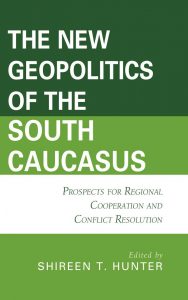 EDITED BY SHIREEN T. HUNTER – CONTRIBUTIONS BY BULENT ARAS; RICHARD GIRAGOSIAN; MOHAMMAD HOMAYOUNVASH; SHIREEN T. HUNTER; RICHARD KAUZLARICH; SERGEY MARKEDONOV; ELDAR MAMEDOV; MOHAIDDIN MESBAHI; NONA MIKHELIDZE AND GHIA NODIA
EDITED BY SHIREEN T. HUNTER – CONTRIBUTIONS BY BULENT ARAS; RICHARD GIRAGOSIAN; MOHAMMAD HOMAYOUNVASH; SHIREEN T. HUNTER; RICHARD KAUZLARICH; SERGEY MARKEDONOV; ELDAR MAMEDOV; MOHAIDDIN MESBAHI; NONA MIKHELIDZE AND GHIA NODIA
This collection surveys the three South Caucasian states’ economic, social and political evolution since their independence in 1991. It assesses their successes and failures in these areas, including their attempts to build new national identities and value systems to replace Soviet-era structures. It explains the interplay of domestic and international factors that have affected their performance and influenced the balance of their successes and shortcomings. It focuses on the policies pursued by key regional and international actors towards the region and assesses the effects of regional and international rivalries on these states’ development, as well as on the prospects for regional cooperation and conflict resolution. Finally, it analyzes a number regional and international developments which could affect the future trajectory of these states’ evolution.
State-Building in Kazakhstan. Continuity and Transformation of Informal Institutions
This book challenges the conventional wisdom that informal institutions—networks, clientelism, and connections—have to disappear in modern societies due to liberalization of the economy, rapid urbanization, and industrialization. The case of Kazakhstan shows that informal reciprocal institutions continue to play an important role in people’s everyday lives. Liberalization of the economy and state retrenchment from the social sphere decreased the provision of public goods and social support to the population in the post-independence period. Limited access to state benefits has, in turn, stimulated people’s engagement in informal reciprocal relations. The author investigates informal channels and mechanisms people use to gain access to quality public goods—education, housing, and healthcare. Comparing the Soviet and post-Soviet periods, the author shows that people are more likely to rely on family networks and clientelist relations rather than on help from the state to obtain scarce resources. The book provides an important contribution to the literature on informal institutions and explains the relationship between a formal welfare state and informal reciprocity.
The Central Asia–Afghanistan Relationship. From Soviet Intervention to the Silk Road Initiatives
EDITED BY MARLENE LARUELLE – CONTRIBUTIONS BY GULDEN ASHKENOVA; ALEXANDER DIENER; ANTONIO GIUSTOZZI; ARTEMY M. KALINOVSKY; MARLENE LARUELLE; BRUCE PANNIER; SEBASTIEN PEYROUSE; GAEL RABALLAND; BOTA RAKISHEVA AND EKATERINA STEPANOVA
Central Asia is a relatively understudied neighbor of Afghanistan. The region is often placed into a number of historical and political contexts—a section of the Silk Road, a pawn in the “Great Game,” the “spillover” state that exemplifies the failure of US foreign policy—that limit scholarly understanding.
This edited volume contributes by providing a broad, long-term analysis of the Central Asia–Afghanistan relationship over the last several decades. It addresses the legacy of Soviet intervention with a unique first-hand selection of interviews of former Soviet Central Asian soldiers that fought in the Soviet–Afghan War. It examines Afghanistan’s norther neighbors, discussing Russia, Uzbekistan, Tajikistan, and Turkmenistan—their strategy for Afghanistan, their perception of challenges and opportunities of the country, and patterns of cooperation and conflict. The collection also looks at recent US strategic initiatives in the region, in particular the New Silk Road Initiative that envisions a growing Central Asia–South Asia connection.
The European Union’s Influence in Central Asia. Geopolitical Challenges and Responses
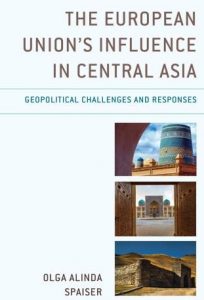 OLGA ALINDA SPAISER
OLGA ALINDA SPAISER
Unknown yet highly strategic, Central Asia attracts the interest of major global powers due to its vast energy resources and crucial geographic position. Russia, China, and the European Union view this region as an indispensable springboard to enhance their political and economic influence on the Eurasian landmass. Thus, facing strong competition and working on low budget, the EU is attempting to establish itself as a relevant and influential actor in an environment in which its leadership role is far from certain. Unlike in other post-communist regions, the EU is not able to rely on the attractiveness of its political models, and risks being marginalized by other global powers. The crucial question then is: How does the EU exert influence in such a challenging geopolitical context? Which strategies does the EU apply to be an actor who counts? Through an analysis of the EU’s discourse, instruments, and the reception of its policies in Central Asia, this study argues that the EU consciously takes the position of a second-tier actor who acts as a “consultant” and projects a picture of itself as an honest broker with no geopolitical agenda. The EU’s influence is confined to niche domains in the security sphere that are nevertheless important for the regional security. The EU is not a great power in the region nor is it willing to become one. It does, however, have comparative advantages in being perceived as inoffensive and for occupying areas that are neglected by the other actors, such as governance and water security.
Eurasia’s Shifting Geopolitical Tectonic Plates. Global Perspective, Local Theaters
ALEXANDROS PETERSEN – FOREWORD BY S. FREDERICK STARR
This anthology of articles, short studies, and interviews by Alexandros Petersen were written over the span of ten years, starting in 2004. Yet they are even more relevant today in their prescient analysis. Petersen insightfully addressed the implications of the West withdrawing its engagement from the Caucasus and Central Asia, the expansion of the Chinese influence, and Russia’s strategic interests.
Rewriting the Nation in Modern Kazakh Literature. Elites and Narratives
DIANA T. KUDAIBERGENOVA
Rewriting the Nation in Modern Kazakh Literature is a book about cultural transformations and trajectories of national imagination in modern Kazakhstan. The book is a much-needed critical introduction and a comprehensive survey of the Kazakh literary production and cultural discourses on the nation in the twentieth and twenty first centuries. In the absence of viable and open forums for discussion and in the turbulent moments of postcolonial and cultural transformation under the Soviets, the Kazakh writers and intellectuals widely engaged with the national identity, heritage and genealogy construction in literature. This active process of national canon construction and its constant re-writing throughout the twentieth century will inform the readers of the complex processes of cultural transformations in forms, genres and texts as well as demonstrating the genealogical development of the national narrative. The main focus of this book is on the cultural production of the nation. The focus is on the narratives of historical continuities produced in the literature and cultural discontinuities and inter-elite competition which inform such production.
The development of Kazakh literary production is an extremely interesting yet underrepresented field of study. Since the late nineteenth century it saw a rapid transformation from the traditional oral to print literature. This brought an unprecedented shift in genres and texts production as well as a rapid growth of the ‘writing’ class – urban colonial and first generations of Soviet intelligentsia. Kazakh literary production became the flagman of republic’s rapid cultural modernization and prior to the World War II local publishing industry produced up to 6 million print copies a year. By the 1960s and 1970s – the golden era of Kazakh literature, the most read literary journal Juldyz sold 50,000 copies all over the country. Literature became the mass provider of knowledge about the past, the present and of the future of the country. Because “Kazakh readers were hungry to find out about their pre-Soviet past and its national glory” national writers competed in genres, styles and ways to write out the nation in prose, poems, essays and historical novels.
Kazakhstan in the Making. Legitimacy, Symbols, and Social Changes
This edited volume returns Kazakhstan to the scholarly spotlight, offering new, multidisciplinary insights into the country’s recent evolution, drawing from political science, anthropology, and sociology. It looks at the regime’s sophisticated legitimacy mechanisms and ongoing quest for popular support. It analyzes the country’s fast changing national identity and the delicate balance between the Kazakh majority and the Russian-speaking minorities. It explores how the society negotiates deep social transformations and generates new hybrid, local and global, cultural references.
Table of Contents and Introduction (pdf)
The Origins of the Civil War in Tajikistan. Nationalism, Islamism, and Violent Conflict in Post-Soviet Space
TIM EPKENHANS
In May 1992 political and social tensions in the former Soviet Republic of Tajikistan escalated to a devastating civil war, which killed approximately 40,000-100,000 people and displaced more than one million. The enormous challenge of the Soviet Union’s disintegration compounded by inner-elite conflicts, ideological disputes and state failure triggered a downward spiral to one of the worst violent conflicts in the post-Soviet space. This book explains the causes of the Civil War in Tajikistan with a historical narrative recognizing long term structural causes of the conflict originating in the Soviet transformation of Central Asia since the 1920s as well as short-term causes triggered by Perestroika or Glasnost and the rapid dismantling of the Soviet Union. For the first time, a major publication on the Tajik Civil War addresses the many contested events, their sequences and how individuals and groups shaped the dynamics of events or responded to them. The book scrutinizes the role of regionalism, political Islam, masculinities and violent non-state actors in the momentous years between Perestroika and independence drawing on rich autobiographical accounts written by key actors of the unfolding conflict. Paired with complementary sources such as the media coverage and interviews, these autobiographies provide insights how Tajik politicians, field commanders and intellectuals perceived and rationalized the outbreak of the Civil War within the complex context of post-Soviet decolonization, Islamic revival and nationalist renaissance.
Afghanistan and Its Neighbors after the NATO Withdrawal
EDITED BY AMIN SAIKAL AND KIRILL NOURZHANOV – CONTRIBUTIONS BY SHAHRAM AKBARZADEH; CHRISTIAN BLEUER; MICHAEL CLARKE; REUEL R. HANKS; NARGIS KASSENOVA; EMILIAN KAVALSKI; KIRILL NOURZHANOV; SEBASTIEN PEYROUSE; AMIN SAIKAL; NAZIF SHAHRANI; MEENA SINGH ROY; MAHMADYUSUF TASHRIFOV AND ALY ZAMAN
Integration in Energy and Transport. Azerbaijan, Georgia, and Turkey
Kyrgyzstan beyond “Democracy Island” and “Failing State”. Social and Political Changes in a Post-Soviet Society


 PETER ROLLBERG
PETER ROLLBERG
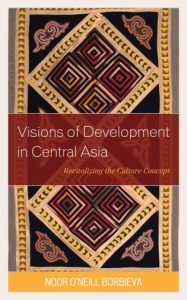
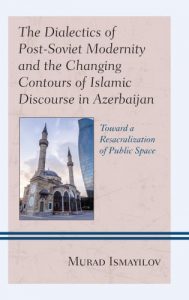
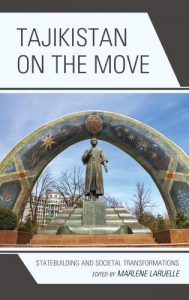
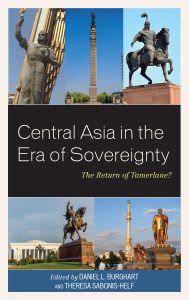 EDITED BY DANIEL L. BURGHART AND THERESA SABONIS-HELF – CONTRIBUTIONS BY LAURA ADAMS; SVETLANA ANCKER; DANIEL L. BURGHART; YUHAO DU; STACIE L. GILES; ROGER D. KANGAS; ELENA KOVALOVA; MARLENE LARUELLE; SALTANAT LIEBERT; ERICA MARAT; MARIYA Y. OMELICHEVA; SEBASTIEN PEYROUSE; TIMOTHY ROWE; THERESA SABONIS-HELF; DENA SHOLK; SOPHIA SRINIVASAN; MÅNS SVENSSON; ROBERT TIMM; RUSTAMJON URINBOYEV; VIVIAN WALKER AND RICHARD WHEELER
EDITED BY DANIEL L. BURGHART AND THERESA SABONIS-HELF – CONTRIBUTIONS BY LAURA ADAMS; SVETLANA ANCKER; DANIEL L. BURGHART; YUHAO DU; STACIE L. GILES; ROGER D. KANGAS; ELENA KOVALOVA; MARLENE LARUELLE; SALTANAT LIEBERT; ERICA MARAT; MARIYA Y. OMELICHEVA; SEBASTIEN PEYROUSE; TIMOTHY ROWE; THERESA SABONIS-HELF; DENA SHOLK; SOPHIA SRINIVASAN; MÅNS SVENSSON; ROBERT TIMM; RUSTAMJON URINBOYEV; VIVIAN WALKER AND RICHARD WHEELER